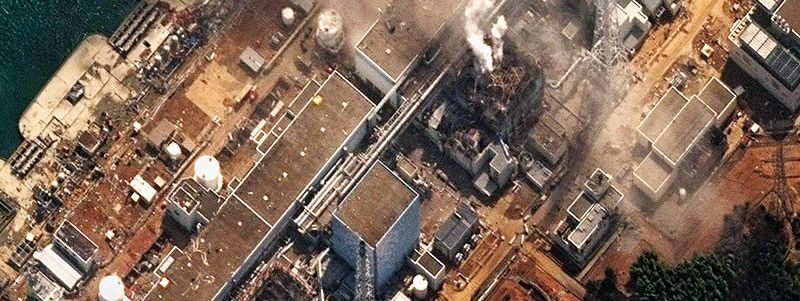-
BASE
subnavigation
BASE
- About us
- Laboratorium
- Career
- Laws and regulations
- Legal Basis
- Manual on Reactor Safety and Radiation Protection
- 1A Nuclear and radiation protection law
- 1B Other laws
- 1C Transport law
- 1D Bilateral agreements
- 1E Multilateral agreements
- 1F EU law
- 2 General administrative provisions
- 3 Announcements of the BMU and the formerly competent BMI
- 4 Relevant provisions and recommendations
- 5 Nuclear Safety Standards Commission (KTA)
- 6 Key committees
- Annex to the NS Handbook
- A 1 English translations of laws and regulations
- Dose coefficients to calculate radiation exposure
- BASE topics in the Bundestag
-
Topics
subnavigation
Topics
Nuclear Safety
Interim Storage / Transport
-
News
subnavigation
The nuclear phase-out in Germany
The Bundestag resolution on 30 June 2011 laid the foundation for the new search for a final repository
Shutdown following limited stretch-out operation
Russia's war of aggression against Ukraine caused a new debate about energy supply and a possible lifetime extension for the last three nuclear power plants in Germany. On 11 November 2022, the Bundestag passed an amendment to the Atomic Energy Act, according to which the three German nuclear power plants still in operation (Isar 2, Neckarwestheim 2 and Emsland) were to be kept in a so-called stretch-out operation for a limited period, until they were shut down on 15 April 2023. The most important questions and answers on the debate about extending the operating lives of German nuclear power plants.
Wolfram König, then president of BASE, on the tenth anniversary of the nuclear phase-out on June 30th, 2021
10 years of nuclear phase-out: great success, but still a lot to do
The lifetimes of the remaining nuclear power plants
- All German nuclear power plants that had gone into operation up to and including 1980 were shut down immediately after the Fukushima nuclear disaster.
- These were: Biblis A and B, Brunsbüttel, Isar 1, Neckarwestheim 1, Unterweser and Philippsburg 1. The Krümmel nuclear power plant was already off the grid at the time.
- The Grohnde, Gundremmingen C and Brokdorf nuclear power plants were shut down on 31 December 2021.
- The last three nuclear power plants in Germany were shut down on 15 April 2023: Isar 2, Emsland and Neckarwestheim 2. Their shutdown had been planned for 31 December 2022. Due to the energy crisis, the three nuclear power plants continued operation in stretch-out mode until 15 April 2023 at the latest. The use of new fuel elements was not permitted.
The decision of the German Bundestag on 30 June 2011 to phase out nuclear energy has paved the way for an orderly withdrawal from this high-risk technology in Germany. At the same time, the phase-out allowed a recommencement of the search for a final repository for high-level radioactive waste.
The nuclear disaster in Fukushima on 11 March 2011 was the cause for the vote in the German Bundestag - and the subsequent decision to phase out nuclear power.
The events in Japan triggered a socio-political debate on the continued use of nuclear energy. Following the catastrophic accident in March 2011, the German government immediately initiated the so-called "nuclear moratorium": The safety of German nuclear power plants was to be re-evaluated within a fixed period of three months. Knowledge gained from the Fukushima accident equence was used to consider various scenarios.
Further details on the German nuclear phase-out can be found in BASE’s technical report "10 years after Fukushima – thinking ahead about safety".
The milestones of the German nuclear phase-out: from 2002 to 2023
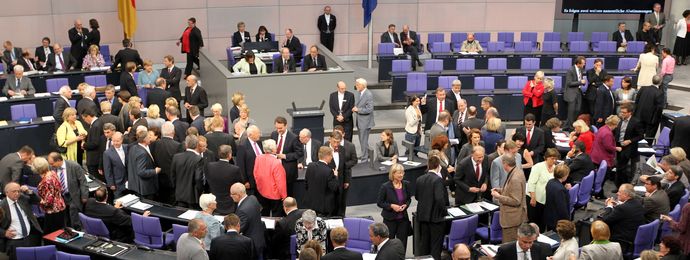
![]() Source: pa/dpa | Wolfgang Kumm
Source: pa/dpa | Wolfgang Kumm
Germany had already decided to phase out nuclear power about 10 years before the reactor accident in Fukushima.
2002: Amendment of the Atomic Energy Actshow / hide
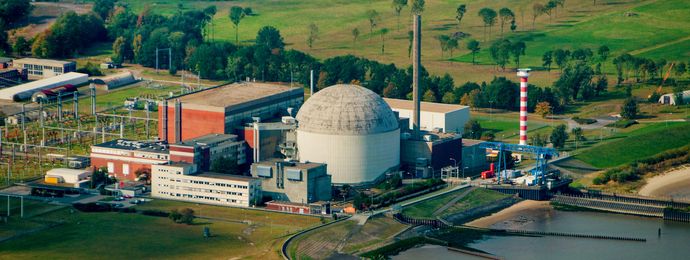
![]() Source: pa/ blickwinkel/C. Kaiser | C. Kaiser
Source: pa/ blickwinkel/C. Kaiser | C. Kaiser
Following a wide public debate, the Atomic Energy Act was amended accordingly on April 22, 2002.
The aim was to phase out nuclear energy for the commercial generation of electricity in an orderly manner. To this end, each nuclear power plant was assigned a residual electricity volume such that the total output of the respective plant corresponded to an average 32-year lifetime. The construction of new nuclear power plants was banned altogether.
In the following years, the first plants were soon shut down for good, as their output had reached the assigned electricity volume. The Stade nuclear power plant, for example, was shut down on November 14, 2003, and the Obrigheim nuclear power plant was finally decommissioned on May 11, 2005.
2010: New energy concept – lifetime extensionshow / hide
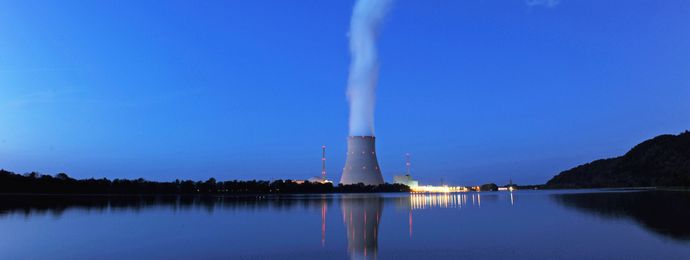
![]() Source: pa/ dpa | Armin Weigel
Source: pa/ dpa | Armin Weigel
At the time, however, the 2002 decision to gradually phase out nuclear power was not based on a sustainable political consensus. A few years later, in September 2010, a new German government presented a new energy concept. Although this new concept remained, in principle, committed to the 2002 nuclear phase-out, it now classified nuclear power a necessary ‘bridging technology’ toward a renewables-based energy system.
As a result, in December 2010, a further amendment to the Atomic Energy Act extended the lifespans of Germany's nuclear power plants and expanded the electricity volumes specified in 2002. All other stipulations from the 2002 Atomic Energy Act - such as the ban on the new construction of nuclear power plants - remained in place.
March 2011: The U-turn after Fukushimashow / hide
Germany saw another U-turn immediately after the Fukushima nuclear disaster on March 11, 2011.
Just three days after the catastrophic accident - on March 14, 2011 - the German government made a series of political decisions that became known as the "nuclear moratorium."
All nuclear power plants (and eventually all other types of nuclear facilities) had to undergo an extensive safety and robustness screening - the so-called stress test. The risks of nuclear energy dominated the public debate at this time.
Nuclear power plants taken off-grid following the Fukushima accident
Following the Fukushima nuclear disaster, the German government decided to shut down all German nuclear power plants that had gone into operation up to and including 1980 immediately.
The following plants were shut down:
- Biblis A and Biblis B,
- Brunsbüttel,
- Isar 1,
- Neckarwestheim 1,
- Unterweser und
- Philippsburg 1.
August 2011: Renewed amendment of the Atomic Energy Act and limitation of operating timesshow / hide

![]() Source: pa/ dpa | Michael Kappeler
Source: pa/ dpa | Michael Kappeler
The German government convened an ethics commission to advise on the future of nuclear energy in Germany. The ethics commission concluded that it was possible to phase out nuclear energy completely within a decade.
Based on this assessment, another amendment to the Atomic Energy Act was made on August 6, 2011: The December 2010 lifetime extension was cancelled, and the electricity volumes originally assigned in 2002 were reinstated.
Eight nuclear power plants were not granted authorization for further power operation when the new Atomic Energy Act came into force on August 6, 2011. This concerned the nuclear power plants
- Biblis A,
- Biblis B,
- Neckarwestheim 1,
- Brunsbüttel,
- Isar 1,
- Unterweser,
- Philippsburg 1,
- Krümmel.
The nuclear power plants
- Grafenrheinfeld,
- Gundremmingen B,
- Philippsburg 2
were also shut down permanently in 2015, 2017 and 2019 respectively.
April 2023: The last three nuclear power plants in Germany have been taken off the gridshow / hide
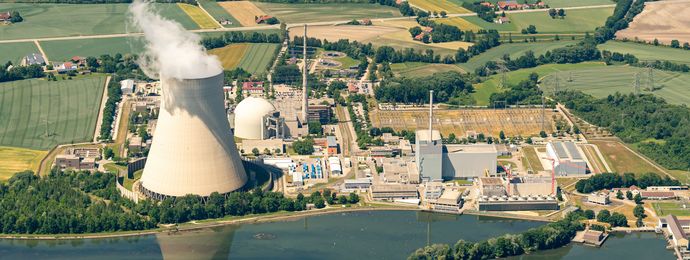
![]() Nuclear power plant Isar
Source: picture alliance / Peter Kneffel | Peter Kneffel
Nuclear power plant Isar
Source: picture alliance / Peter Kneffel | Peter Kneffel
By the end of 2021 the nuclear power plants
- Grohnde
- Gundremmingen C and
- Brokdorf
were shut down for good.
On 15 April 2023, the three remaining nuclear power plants were finally shut down:
- Isar 2,
- Emsland and
- Neckarwestheim 2.
These three nuclear power plants continued a temporary stretch-out operation beyond the planned shutdown date at the end of 2022, and until mid-April 2023 at the latest. The use of new fuel elements was not permitted.
Safety issues as drivers for nuclear phase-out
Safety was a paramount concern in the decision to phase out nuclear power: the use of nuclear energy causes highly dangerous radioactive radiation for humans and the environment, and leaves behind highly toxic waste. High safety precautions must be taken throughout the entire life cycle - from the extraction of the raw material uranium to the production of the fuel, the operation of nuclear power plants and final disposal. This is the only way to reduce risks to humans and the environment, and to prevent misuse.
Yet, in the past, there have been several serious accidents that had catastrophic consequences for society and the environment affected. This is why the German society concluded that the risks of this technology exceeded the benefits, and subsequently decided to phase-out the use of nuclear energy.
The question of final storage of high-level radioactive waste, which remains unresolved worldwide to this day, was a second important reason for phasing out the use of nuclear energy in Germany. For final storage encompasses more than just the end of reactor operations, it also covers the safe storage of the highly dangerous waste. So, what is going to happen to the high-level radioactive waste? The law stipulates that a site for a final repository is to be found within Germany by 2031 – in an open-ended, transparent procedure that involves the public.
2022 - War in Ukraine raises new safety concerns
With Russia's attack on Ukraine, which is illegal under international law, nuclear facilities have become the target of armed conflict for the first time. The central argument for the nuclear phase-out - the risk of catastrophic accidents - has thus intensified in Germany and other countries.
Nuclear phase-out: central prerequisite for the search for a final repository
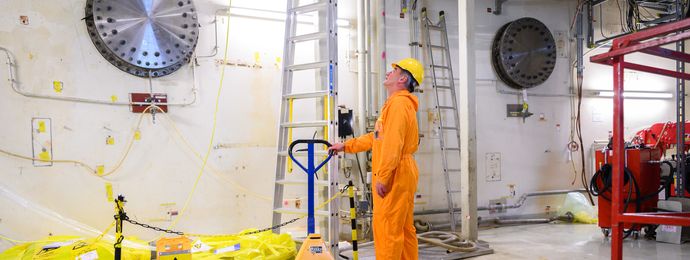
![]() Source: pa//dpa | Mohssen Assanimoghaddam
Source: pa//dpa | Mohssen Assanimoghaddam
Phasing out nuclear energy does not only mean ending the operation of the reactors, it also entails the safe disposal of their highly dangerous legacies. But what will happen to the high-level radioactive waste? It must be stored safely. The law stipulates that a site for a final repository is to be found within Germany by 2031 – in an open-ended, transparent procedure involving the public.
Regulated by law: The search for a repositoryshow / hide
In 2013, the Bundestag passed a law on the search for a final repository for high-level radioactive waste in Germany, also by a broad majority. The aim is to find a site where the waste can be permanently disposed of in a layer of rock deep below the earth's surface, without any pre-determinations and with public participation from the onset.
Prerequisites for the search for a repositoryshow / hide
Phasing out the use of nuclear energy is a central prerequisite for the successful search for a final repository. The Ethics Commission appointed by the Federal Government wrote in its final report:
"Achieving a social consensus on final storage is closely linked to determining a definite phase-out date for nuclear power plants. The prospect of having to safeguard high-level radioactive waste over several millennia is a heavy burden for future generations."
Quantity of high-level radioactive waste established for the first timeshow / hide
The phase-out will substantiate the amount of waste to be disposed of. The requirements regarding the size of the repository will become definable - an essential basis for the credibility of the process and the associated social consensus. For the search for a final repository will no longer be linked to the continued operation or new construction of nuclear power plants and thus to a permanent socio-political conflict.

![]() www.endlagersuche-infoplatform.de
www.endlagersuche-infoplatform.de
The Federal Office for the Safety of Nuclear Waste Management (BASE) oversees the search for a final repository for high-level radioactive waste. The aim is to ensure permanent protection against the highly hazardous materials. All information on the search for a final repository can be found on the BASE information platform.
New technologies as alternatives to final disposal?
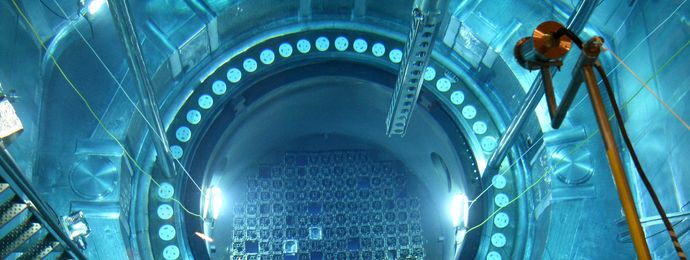
![]() Source: picture alliance / dpa | Uli Deck
Source: picture alliance / dpa | Uli Deck
BASE expert report evaluates SMR concepts
Small modular reactors (SMRs) have been the subject of repeated discussion in recent times. They promise cheap energy, safety, and little waste.
BASE had commissioned an expert report (in German) to evaluate these concepts and the risks associated with them. The report provides a scientific assessment of possible areas of application and the associated safety issues. It concludes that the construction of SMRs is only economically viable for a very large number of units and poses significant risks if widely deployed.
Expert report answers questions on partitioning and transmutation (P&T)
BASE also commissioned another expert report on questions of partitioning and transmutation. Such concepts have been discussed worldwide for decades as a way to separate long-lived radioactive waste (partitioning) and convert it to short-lived waste (transmutation).
However, none of those concepts have proven feasible on an industrial scale yet. In addition, it can be assumed that partitioning and transmutation will not be applicable to all long-lived components of the waste. A repository that must be isolated from the environment for a million years will therefore remain a necessity.
State of 2024.01.31

